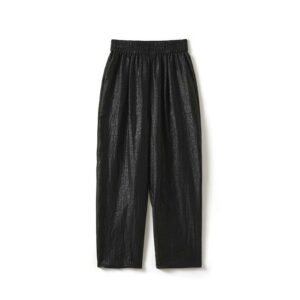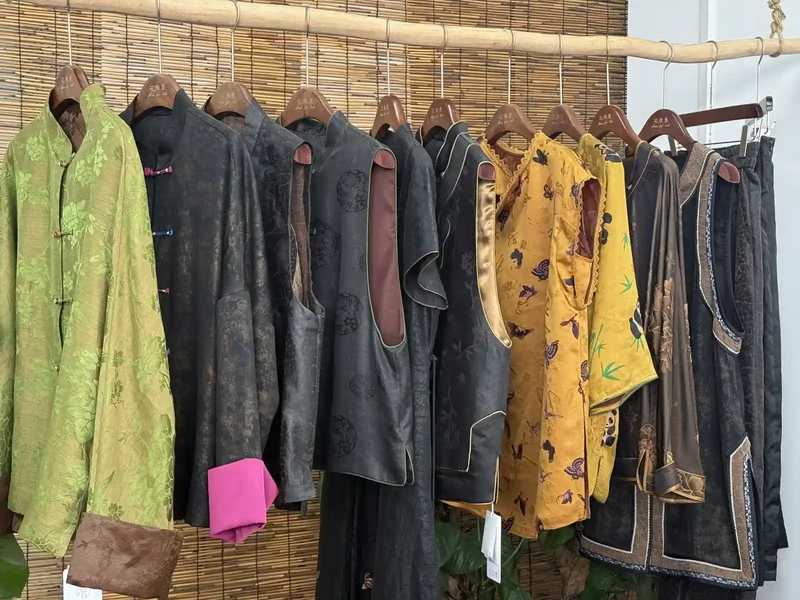
Xiang Yun Sha Silk
Xiang Yun Sha, originating in the Song Dynasty, is the only silk fabric in the world dyed with pure plant-based pigments.
Xiang Yun Sha's unique production process makes it rare and time-consuming.
Xiang Yun Sha is wrinkle-resistant, refreshing, comfortable, light, and soft, and also has antibacterial and insect repellent properties.

Craftsmanship, Value and Heritage
Xiang Yun Sha is made using mulberry silk as a base. The dye is then repeatedly soaked and dried in the sap of the natural plant Dioscorea paniculata, creating a tan base. River mud is then evenly applied to the surface, gradually transforming the fabric to a dark brown and creating a lustrous luster.
Xiang Yun Sha is known as the "soft gold" of textiles for its refreshing, breathable texture, smooth drape, and pliability. It softens and becomes more lustrous with wear, making it both practical and valuable as an artistic collectible.
The preservation of Xiang Yun Sha is a crucial aspect of China's intangible cultural heritage. Its craftsmanship is passed down through generations through family-run workshops and a master-apprentice system in places like Shunde, Foshan.
Looking to buy fabric?
Customization and Innovation
Xiang Yun Sha Silk Historical Development
| Period | Key Developments & Characteristics | Context & Influence |
| Ancient Times | Initial use of Dioscorea cirrhosa (shuliang) for fabric dyeing in southern China. | Agricultural society; early textile techniques. |
| Ming Dynasty | Preliminary techniques developed in Guangdong: dyeing with shuliang and river mud. | Silk industry flourished in Lingnan region. |
| Late Qing | Named “Xiang Yun Sha”; became high-end summer fabric for the wealthy. | Prosperity in Lingnan; frequent trade via Guangzhou. |
| Republic Era | Popular in cities like Shanghai and Guangzhou; exported to Southeast Asia. Expensive due to complex craft. | Blending of Eastern and Western fashion trends. |
| 1950s-1970s | Production declined due to planned economy. | Priority given to industrial mass production. |
| 1980s-2000s | Gradual revival post-reform; recognized as intangible cultural heritage (2008). | Traditional craft preservation & modern design fusion. |
| Present | High-end cultural symbol; handmade in Guangdong; eco-friendly and sustainable. | Global appreciation for traditional craftsmanship. |
Xiang Yun Sha Silk Craftsmanship
The production of Xiangyunsha involves more than ten steps, all of which take about half a year. Compared with other silk crafts, Xiangyunsha has two unique steps: dyeing with yam and applying with river mud.
Dyeing with yam: Silk fabric is repeatedly soaked in juice extracted from yam (a perennial vine native to southern China) and aired dozens of times.
Applying with river mud: Iron-rich river mud is evenly applied to one side of the fabric.
The tannic acid in the yam reacts with the iron ions in the river mud on the surface of the silk fabric, forming a bright dark brown coating.
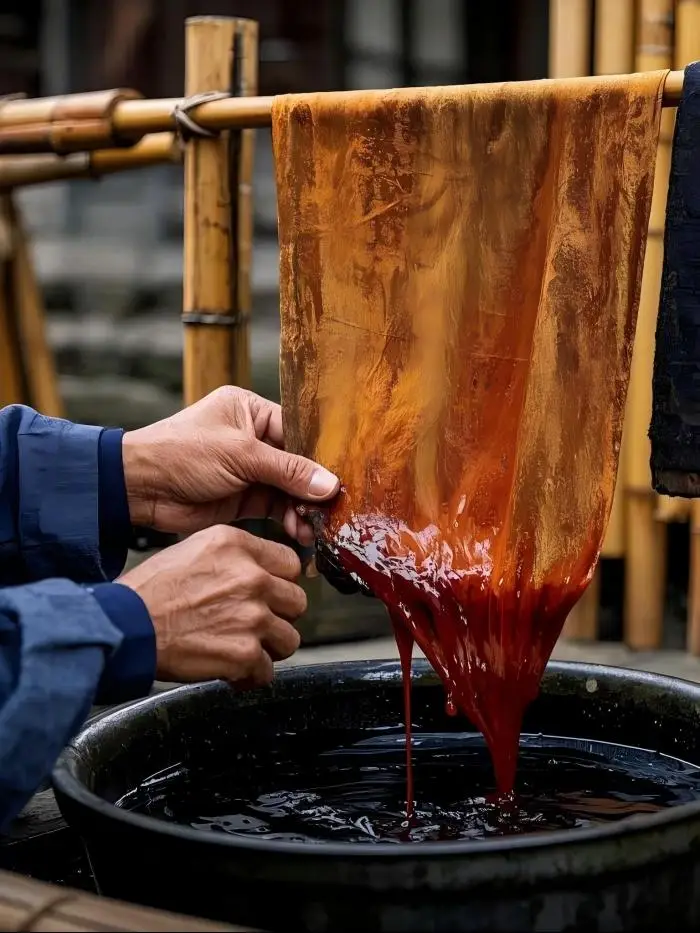
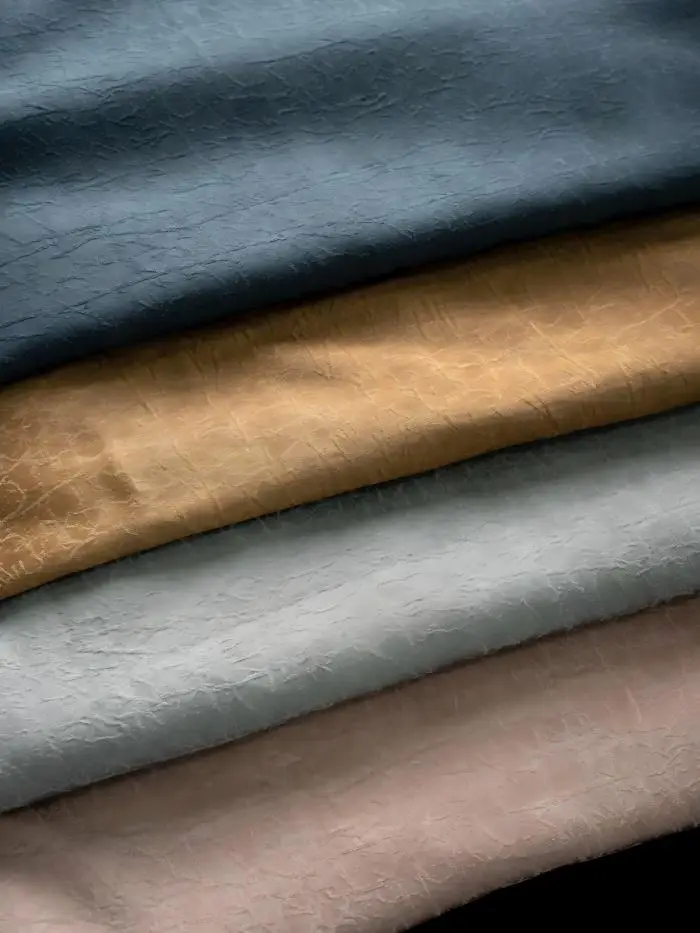
Xiang Yun Sha Silk Varieties
There are many varieties of Xiang Yun Sha. Below are some common varieties and their characteristics:
Heavy Satin Xiang Yun Sha: Thick, lambskin-like, with a smooth texture, suitable for autumn and winter coats and dresses.
Crackle-Tortoiseshell Xiang Yun Sha: Featuring a natural cracked surface, it is abrasion-resistant and snag-resistant, making it suitable for spring and summer trousers and windbreakers.
Guanle Crepe Xiang Yun Sha: Featuring a rich embossed pattern, it creates a three-dimensional effect and is suitable for cheongsams and dresses.
Pearl Satin Xiang Yun Sha: Featuring a grainy surface and a smooth feel, it is suitable for spring and summer styles.
Plain Crepe Xiang Yun Sha: Featuring a complex weave, it produces vibrant and soft colors and is suitable for dresses, scarves, tops, and shirts.
Sangbo Satin Xiang Yun Sha: Available in a variety of jacquard patterns, it offers a soft and delicate texture and is suitable for home textiles and high-end fashion.
Xiang Yun Sha Silk Cultural Value
Xiang Yun Sha is a Chinese intangible cultural heritage, steeped in rich historical and cultural heritage. On July 27, 2020, it was successfully included in the second batch of protected geographical indications in China and Europe.
Naturally carved, Xiang Yun Sha embodies the unique values of “man and nature.”
Xiang Yun Sha also holds economic value. While its production requires significant labor and time, and its production is limited, the finished product is unique and exquisite, earning it the nickname “soft gold.”
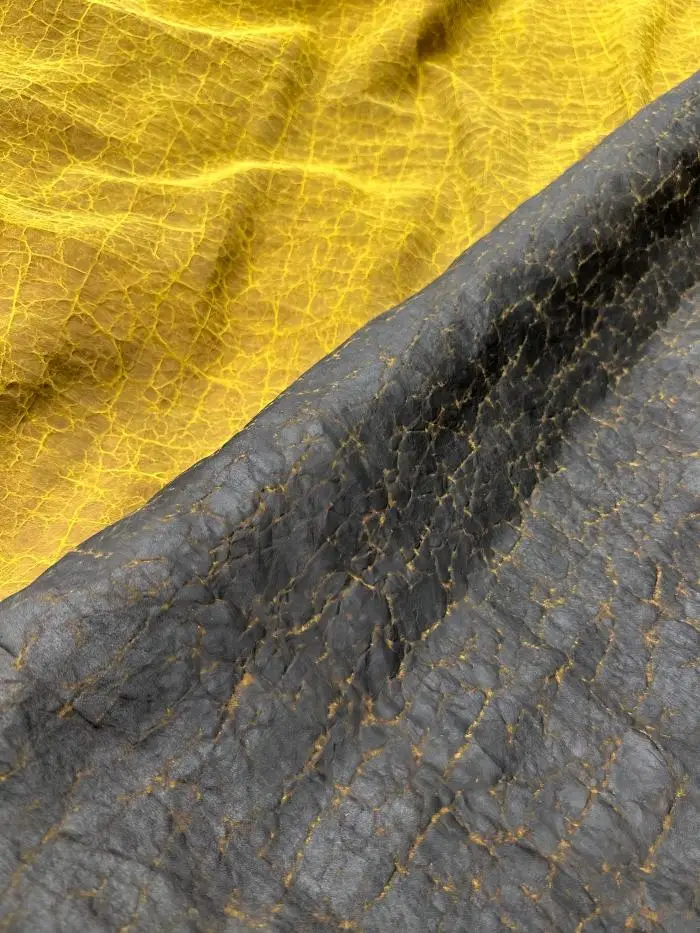

Xiang Yun Sha Modern Inheritance
Designers incorporated Xiang Yun Sha fabric into modern fashion designs, creating new trendy items for fashion shows. Through this stylish product display, Xiang Yun Sha has achieved innovative development.
As a national intangible cultural heritage, the preservation and inheritance of Xiang Yun Sha has received support from all sectors of society.
Through industrial projects and brand partnerships, Xiang Yun Sha’s market influence continues to expand.

